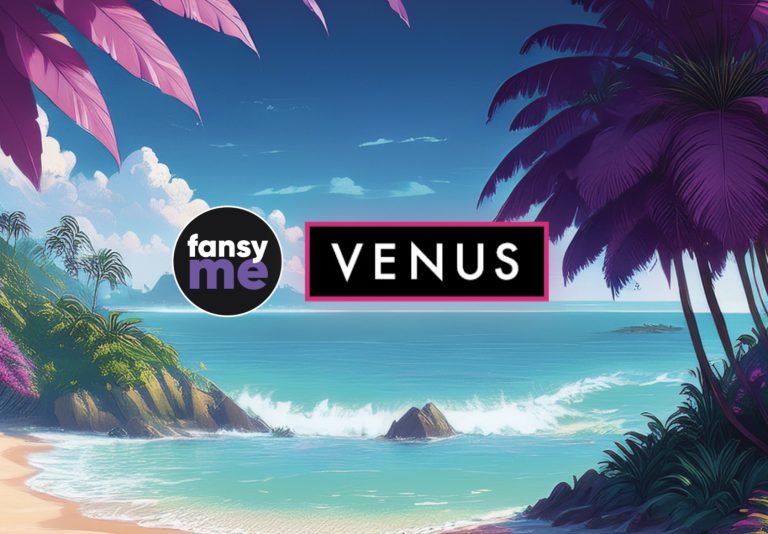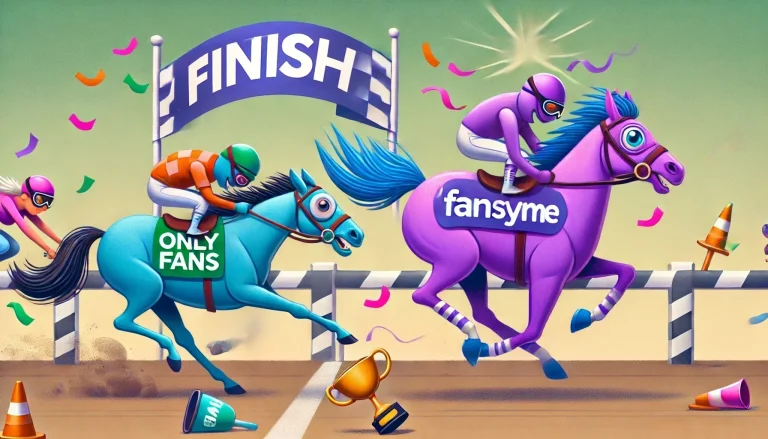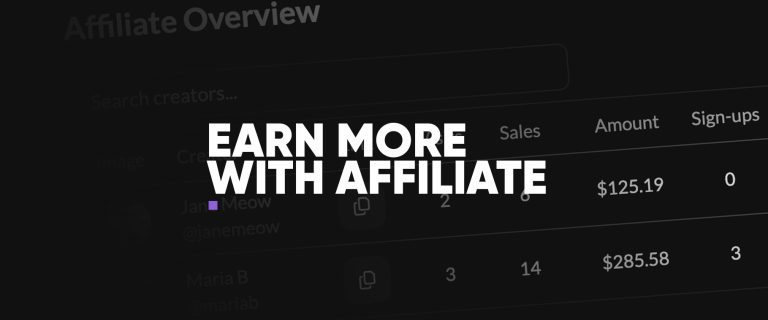

Content Creator vs. Influencer: who Performs Better?
This post is also available in:
Deutsch (German)
In the digital age, content creator and influencer are two terms that are often confused. Both groups play an important role in the world of social media, but their approaches and goals differ significantly. In this article, we take a look at the differences between content creators and influencers, the reach they can achieve, and what this might mean for brands.
But let’s start with the basics. Both terms are often used interchangeably, but there are subtle differences that we’d like to highlight below.
The Role of the Content Creator
A content creator is essentially someone who creates content. Sounds simple, but it’s not always. It’s about more than just uploading a few photos. Creators produce video content, write blog articles, design graphics, or produce podcasts. They are versatile and cover a wide range of areas. For example, there are models who share their photoshoots and modeling jobs, fitness models who provide insights into their training routines and nutrition, video creators who produce entertaining or informative videos, and adult models who offer exclusive content on platforms like FansyMe. Each of these groups has its own specific target audience and type of content.
The Role of the Influencer
An influencer, on the other hand, already has a certain reach and uses it to influence others – hence the name. Often it’s about promoting products or services. An influencer can of course also create content, but the focus is more on using their personality and influence to spread messages. It’s about setting trends and influencing purchasing decisions. Many influencers monetize their reach through advertising and collaborations.
Similarities and Differences
So where are the similarities and differences? Both content creators and influencers are at home in the digital world and use social media platforms to reach their target audiences. Both can also make money, but the way they do it can be different. The main difference lies in the intention. A creator focuses on the content itself, while an influencer uses their influence to achieve certain goals.
Imagine a content creator is like a chef who creates a delicious dish. The influencer is more like a restaurant owner who recommends the dish and ensures that many people try it.
To make it clear:
- Content Creator: Focus on content, creativity, added value
- Influencer: Focus on influence, reach, marketing
- Both: Can work together to achieve goals
There are of course also mixed forms. Someone can be a great creator and at the same time have a large reach and act as an influencer. Or an influencer can create high-quality content to strengthen their credibility. The boundaries are fluid, but the basic principle remains: Content is king and influence is power.
Reach and Influence – who Has more?
Okay, now it “’s getting exciting! Who’s ahead when it” comes to reach and influence? Content creator or influencer? Let’s take a closer look.
Follower Numbers Compared
Sure, follower numbers are what catches the eye at first. But are many followers really everything? Not necessarily! An influencer with a huge following may be able to reach many people, but that doesn’t mean they’re all really interested in what he or she does. An authentic creator with a smaller but engaged community can often achieve more. It’s all about what you make of it, right? A Statista survey from 2023 shows that Instagram is becoming increasingly important.
Analyzing Engagement Rates
Here’s the crux: Engagement! What good are millions of followers if no one likes or comments on your posts? Exactly, nothing. Engagement rates, i.e., how many people actually interact with your content, are much more meaningful. A digital creator who delivers high-quality content and builds a real relationship with their community often has higher engagement rates than an influencer who simply promotes products. Makes sense, right?
The Power of the Niche
And then there’s the niche. An influencer who has specialized in a very specific topic can wield enormous power in their niche. Think of a gaming influencer who is idolized by their community, or a beauty vlogger whose tips are blindly trusted. Those who have made a name for themselves in their niche can often keep up or even surpass others.
In the end, it’s not just about the sheer number of followers, but also about how engaged the community is and how well you’ve positioned yourself in your niche. Reach isn’t everything, influence is key!
Content and Creativity – What’s Being Shown?
Types of Content
Creators are often the experts in diversity. They write blog articles and podcasts that you can actually learn from, create infographics that make complex information easy to understand, and of course produce videos – not just short clips, but also documentaries or tutorials.
Content creators are in the gaming sector, as well as in beauty, food, or fashion. There are models who share their photoshoots and modeling jobs, fitness models who provide insights into their training routines and nutrition, video content creators who create entertaining or informative videos, but also erotic models with live streams that allow direct interaction involving toys like the Lush from Lovense. In addition, there are live streams that enable real-time interaction, as well as creative formats that captivate the audience.
Influencers, on the other hand, often focus on visual content and short, concise messages that immediately grab the viewer’s attention. Stories, posts, TikToks – anything that can be quickly consumed and catches the eye is used by them to effectively spread their messages. These formats are ideal for staying relevant in the fast-paced world of social media and reaching a broad target audience. Of course, this isn’t set in stone either. There are deviations here too, and the boundaries sometimes blur.
Creativity in Content Creation
Creativity is key, of course. But what does that mean specifically? For content creators, it often means developing new formats, experimenting with different styles, and even trying something crazy. It’s about thinking marketing differently and not just doing what everyone else is doing.
Creativity isn’t just a nice extra, but the fuel that keeps the whole machine running. Without new ideas and fresh approaches, things quickly get boring.
Authenticity and Credibility
Authenticity is the keyword! People quickly notice when someone isn’t genuine. Influencers need to be credible, otherwise the message they want to convey falls flat. This means:
- Expressing honest opinions
- Not promoting just anything
- Staying true to oneself
Content creators might have it a bit easier here because they often stand less in the spotlight and can focus more on their content. But here too: Liars get caught!
Target Groups and Community – who Reaches whom?
Target Group Analysis for Creators
Okay, let’s talk about target groups. For creators, it’s super important to know who actually consumes their content. Who are these people? What do they like? What are they looking for? It’s about having a clear picture of your own community. This helps tremendously in creating content that really resonates.
- Age
- Interests
- Online behavior
Community Building for Influencers
Influencers are masters at community building. It’s not just about collecting followers, but about building a real relationship with them. They interact, answer questions, and create a sense of belonging. This is the key to gaining a loyal fan base. And hey, if you have a strong community, it’s easier to sell products or ideas. Some influencers even use platforms like FansyMe to get even closer to their fans.
A strong community is worth its weight in gold. It ensures engagement, loyalty, and helps achieve your own goals.
Interaction and Engagement
Interaction is key! Whether comments, likes, or shares – every interaction counts. The more interaction, the better. Creators and influencers need to actively interact with their community to keep engagement high. Ask questions, start discussions, and show that you value your followers’ opinions. This is the only way to build a vibrant and active community.
Marketing Strategies – how Do Brands Use both?
Collaboration with Content Creators
Brands often invite creators in the idea phase. Instead of rigid briefings, there are open slots for their own ideas. This makes the content more personal and stays close to the creator’s style:
- Joint brainstorming sessions to spin storylines
- Co-production on set so the creator can do their thing
- Long-term collaborations to build a real relationship with the target audience
Without creative freedom for the creator, a campaign quickly feels contrived.
When brands and creators sit down together early, the spark is much more likely to fly.
Influencer Marketing Strategies
Many companies split their budget depending on the goal and reach:
| Influencer Type | Post Price (approx.) | Engagement Rate |
|---|---|---|
| Micro (5-10k) | $50-200 | 5-8% |
| Mid-Tier (50k) | $500-2,000 | 3-5% |
| Mega (>100k) | from $5,000 | 1-3% |
This way you can
- Use micro-influencers for recommendations and honest feedback,
- Mid-tier for solid reach and
- Mega-influencers to push big campaigns.
Campaign Examples
Here are three models for mixing both worlds while maintaining authenticity:
- A sneaker brand has a creator film unusual test settings, while influencers share exclusive discount codes.
- A beauty brand launches a product challenge: Micro-influencers guess ingredients, creators produce the behind-the-scenes video.
- An outdoor startup takes a creator on tour, then a well-known influencer shares their favorite everyday experiences.
Future Outlook – where is the Journey Heading?
The digital world is spinning faster and faster, and what’s trendy today could be old news tomorrow. What does this mean for digital creators and influencers? Let’s take a look into the crystal ball.
Trends in Content Creation
Content creation is subject to constant change. We’re seeing more and more short videos, podcasts, and interactive content. People don’t just want to consume, they want to participate. Personalization is also becoming increasingly important. Everyone wants content that’s tailored exactly to their interests. And don’t forget AI – it’s already helping us create and optimize content. Who knows what’s coming next?
The Role of Social Media
Social media remains the be-all and end-all. But even here, there are changes. New platforms come and go, algorithms are constantly changing. It’s important to stay flexible and keep adapting. TikTok, Instagram, YouTube – each platform has its own rules and target audience. Those who want to be successful here must understand this.
Influence of AI and Technology
AI is here to stay. It helps us with ideation, content creation, and analysis. But beware: while AI can support us, it can’t (yet) replace us. Creativity and authenticity are still in demand. It’s about using AI as a tool to create even better content.
The future belongs to those who can adapt. Those who are open to new things and ready to constantly evolve have good chances of being successful in the future.
Here are a few points that will become important in the future:
- Even more personalized content
- Stronger community bonding
- Use of AI for content optimization
Success Factors – What Makes a Creator or Influencer Successful?
Sure, reach is important, but what makes someone truly successful in the world of content creators and influencers? It’s about more than just follower numbers. Let’s take a look!
Consistency and Quality
Regularity is key. If you only post once in a blue moon, you’ll be quickly forgotten. But watch out: quality trumps quantity! Better to post less, but really good content that offers real value. Remember, your viewers want to be entertained, informed, or inspired. Here are a few points you should keep in mind:
- Regular upload schedule
- High-quality content (image, sound, text)
- Diverse topics
Building a Personal Brand
You are your own product! What makes you unique? Find your niche and develop a clear, recognizable brand. It could be your humor, your expertise, or simply your personality. People follow you because they like you – so show yourself! A strong brand voice is crucial.
Networking and Collaborations
The digital world is big, but you don’t have to do everything alone. Look for other creators and influencers you can collaborate with. This not only brings new ideas but also a larger audience. Think of win-win situations where both sides benefit. And don’t forget: networking is also important offline!
It’s important to stay authentic and not bend yourself just to please others. Genuine relationships with your audience and other creators are worth their weight in gold.
How you increase influencer engagement depends heavily on your ability to build and nurture a community. And if you want to know how to do it best, just start and learn from your mistakes!
Conclusion: Who’s Leading the Pack?
At the end of the day, it depends on what you’re looking for. Both content creators and influencers have their place in the digital jungle. If you’re looking for in-depth content that really tells a story, then creators are just right for you. They stand out for their creativity, their ability to build an engaged community, and their often greater reach. Platforms like FansyMe support creators in reaching and monetizing their community directly, without relying on traditional advertising methods. In comparison, influencers are the better choice if you just want to quickly reach a lot of people and promote products.
Ultimately, it depends on your goals. No matter who you choose, the important thing is that the collaboration remains authentic and fits your brand. So, think about what works best for you and just go for it!
Frequently Asked Questions
What’s the Difference between Content Creators and Influencers?
Content Creators produce content like videos and texts, while Influencers influence their followers and promote products.
Who Has more Followers?
Influencers often have more followers, as they focus on influencing purchasing decisions.
How Important are Engagement Rates?
Engagement rates are important because they show how actively followers interact with the content.
What are the Best Types of Content for Social Media?
Popular content includes videos, images, and stories that engage and entertain the audience.
How Do Influencers Build Their Community?
Influencers regularly interact with their followers, share personal stories, and encourage exchange.
What are the Trends in Content Creation?
Current trends include the use of short videos, live streaming, and the integration of interactive elements.



